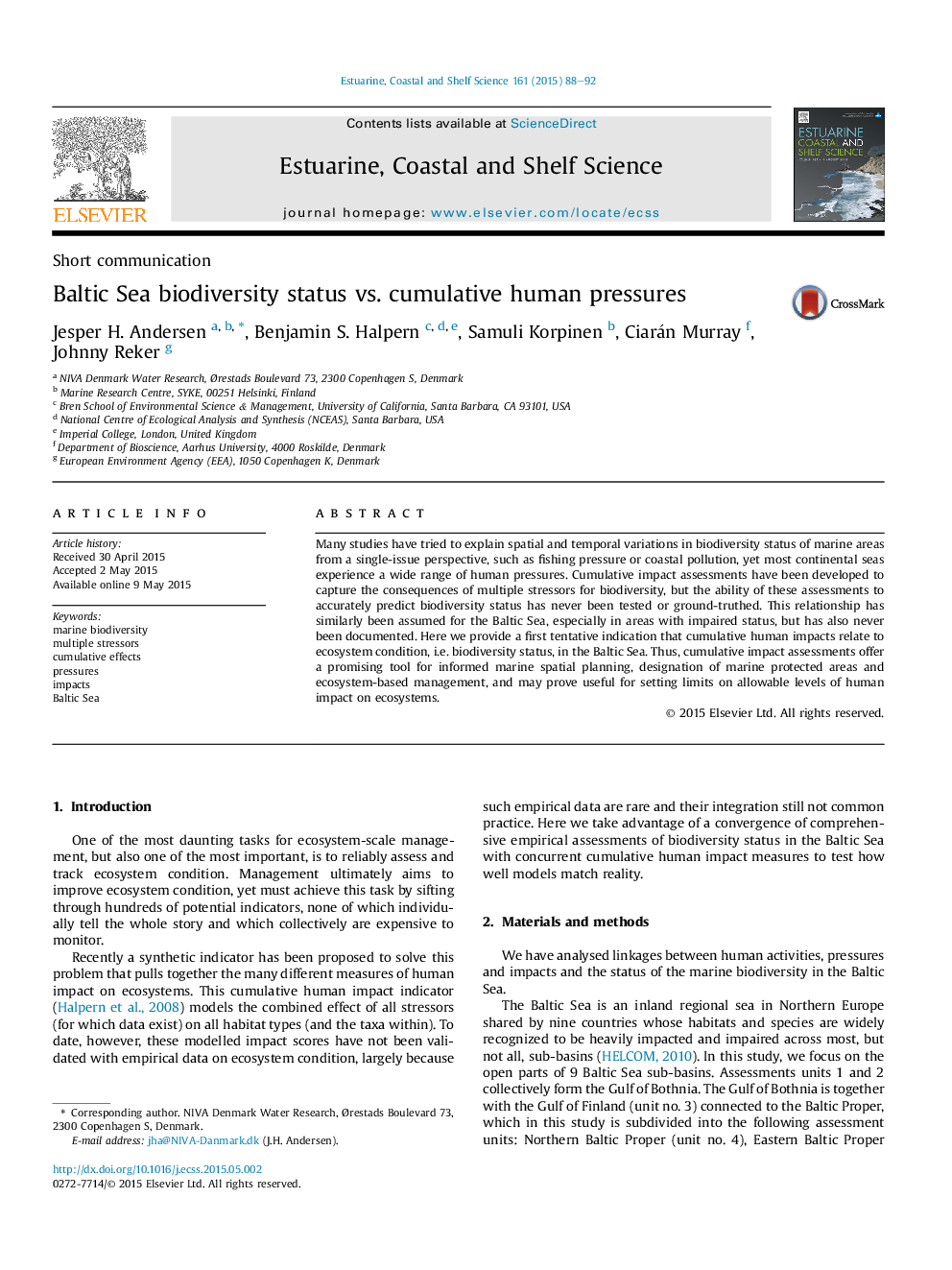| Article ID | Journal | Published Year | Pages | File Type |
|---|---|---|---|---|
| 4539468 | Estuarine, Coastal and Shelf Science | 2015 | 5 Pages |
Many studies have tried to explain spatial and temporal variations in biodiversity status of marine areas from a single-issue perspective, such as fishing pressure or coastal pollution, yet most continental seas experience a wide range of human pressures. Cumulative impact assessments have been developed to capture the consequences of multiple stressors for biodiversity, but the ability of these assessments to accurately predict biodiversity status has never been tested or ground-truthed. This relationship has similarly been assumed for the Baltic Sea, especially in areas with impaired status, but has also never been documented. Here we provide a first tentative indication that cumulative human impacts relate to ecosystem condition, i.e. biodiversity status, in the Baltic Sea. Thus, cumulative impact assessments offer a promising tool for informed marine spatial planning, designation of marine protected areas and ecosystem-based management, and may prove useful for setting limits on allowable levels of human impact on ecosystems.
